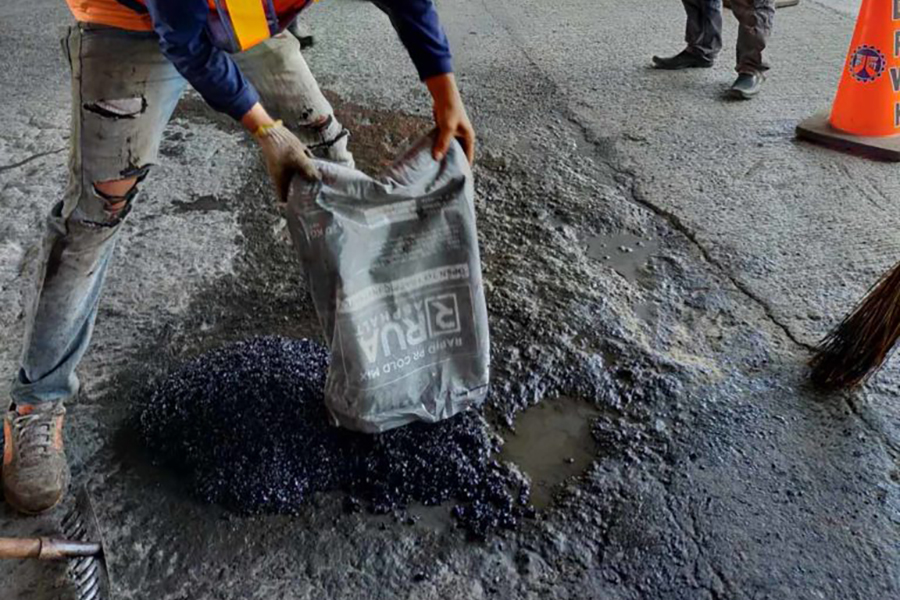Reimagine Your Space: Hot Mix Asphalt Paving for Angled Parking Lot Projects
Reimagine Your Space: Hot Mix Asphalt Paving for Angled Parking Lot Projects
Blog Article
Unlocking the Secrets of Hot Mix Asphalt Technology
Checking out the depths of hot mix asphalt innovation discovers a world where exact formulations and precise procedures merge to form our roads and infrastructure. The fusion of fillers, binders, and aggregates isn't simply a building and construction task yet a strategic orchestration of toughness and effectiveness. As we peer right into the elaborate dancing of components, a tapestry of strength and sustainability unfolds. What exists under this surface area of asphaltic mastery, and what secrets wait to be revealed in the world of leading advancements?
Importance of Warm Mix Asphalt
Hot Mix Asphalt plays an essential duty in modern framework development because of its durability and cost-effectiveness. As one of the most frequently used paving product for roads, highways, and parking area, Warm Mix Asphalt offers a series of benefits that add to its significance in building and construction projects. One essential benefit is its ability to endure hefty website traffic lots and harsh weather, providing a lasting and trusted surface area for transport networks. Furthermore, Warm Mix Asphalt is cost-effective in both initial building and long-lasting upkeep, making it a recommended choice for many infrastructure jobs.
The toughness of Hot Mix Asphalt stems from its make-up, which consists of aggregates, binder, and filler products that are thoroughly picked and blended to meet specific efficiency requirements. On the whole, the significance of Warm Mix Asphalt in facilities development can not be downplayed, as it continues to be a foundation of contemporary construction methods.
Components of Asphalt Mixes
The make-up of asphalt mixes contains carefully chosen accumulations, binder, and filler materials that are crucial for accomplishing details performance needs. Aggregates are the main part of asphalt mixes, supplying strength and stability. These accumulations can be natural, such as crushed rock or smashed stone, or synthetic, like recycled products from old pavements. The binder, usually asphalt or asphalt cement, holds the aggregates together and supplies flexibility and sturdiness to the mix. The option of the binder is essential as it straight affects the mix's performance in different weather condition problems. Fillers, such as hydrated lime or Rose city concrete, are used to enhance the mix's workability and aging resistance. Angled Parking.
The mix and proportion of these elements play a considerable function in figuring out the top quality and efficiency of the asphalt mix. Designers very carefully make the mix to fulfill specific needs, taking into consideration factors like website traffic quantity, environment problems, and pavement lifespan. Proper selection and balancing of aggregates, binder, and fillers are vital for producing resilient, long-lasting asphalt pavements.
Mixing and Production Strategies
As soon as the aggregates are selected, the binder, frequently asphalt cement, is added to bind the materials together. The binder's quality and amount significantly impact the mix's adaptability, toughness, and resistance to ecological variables. Additionally, fillers like hydrated lime or Portland concrete might be incorporated to enhance certain characteristics of the asphalt mix, such as its workability or moisture resistance.
Throughout production, the accumulations and binder are warmed, commonly in between 250-325 ° F(121-163 ° C ), to assist in mixing and ensure correct finish of the aggregates. The blending procedure has to be detailed to accomplish a homogeneous combination that promotes the desired efficiency qualities of the asphalt. Various strategies, such as batch blending or drum mixing, are employed to attain constant and top quality asphalt mixes for building and construction jobs.
Factors Impacting Asphalt Performance
Variables influencing asphalt performance incorporate an array of variables that impact the toughness, long life, and overall high quality of asphalt sidewalks. One vital factor is the quality of materials made use of have a peek at these guys in the asphalt mix.

Layout considerations, such as pavement thickness and drainage, are vital in making sure the lasting efficiency of the asphalt sidewalk. By meticulously considering these specialists, elements and engineers can maximize asphalt efficiency and improve the service life of pavements.
Lasting Practices in Asphalt Modern Technology

WMA permits for the production and placement of asphalt blends at lower temperatures contrasted to traditional hot-mix asphalt, resulting in minimized power consumption and greenhouse gas discharges. The use of porous asphalt mixes can assist reduce stormwater overflow problems by enabling water to penetrate with the pavement and into the ground, promoting all-natural water filtration and reenergize procedures.
Conclusion
To conclude, hot mix asphalt technology plays a vital duty in modern-day framework growth as why not look here a result of its resilience and cost-effectiveness. By very carefully stabilizing elements, utilizing appropriate mixing methods, and thinking about different elements, engineers can create top quality asphalt blends that endure rush hour tons and harsh climate condition. Embracing sustainable techniques, such as using recycled materials and warm-mix innovations, even more improves the ecological friendliness of asphalt technology.
Blending and manufacturing techniques in hot mix asphalt modern technology include the specific combination and handling of aggregates, binder, and fillers to create a long lasting and high-performance asphalt mix.Elements influencing asphalt efficiency include a range of variables that influence the toughness, durability, and total internet high quality of asphalt sidewalks. Sustainable practices in asphalt modern technology encompass numerous efforts intended at minimizing the environmental effect of asphalt production and paving procedures. By incorporating redeemed asphalt pavement (RAP) and recycled asphalt tiles (RAS) into new asphalt blends, the industry can dramatically decrease the intake of raw materials and power, while also reducing land fill waste.
WMA enables for the manufacturing and placement of asphalt mixes at reduced temperatures contrasted to traditional hot-mix asphalt, resulting in minimized power consumption and greenhouse gas discharges.
Report this page